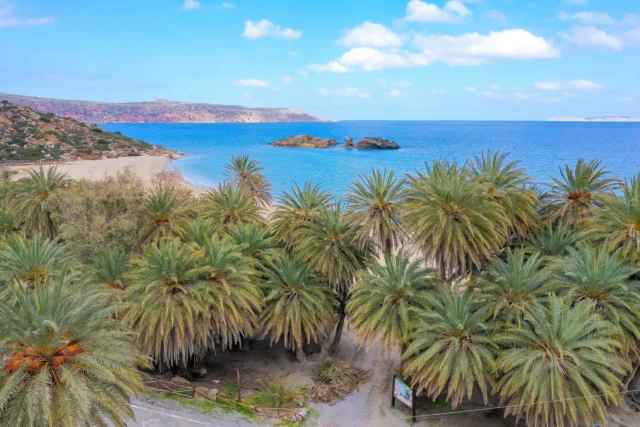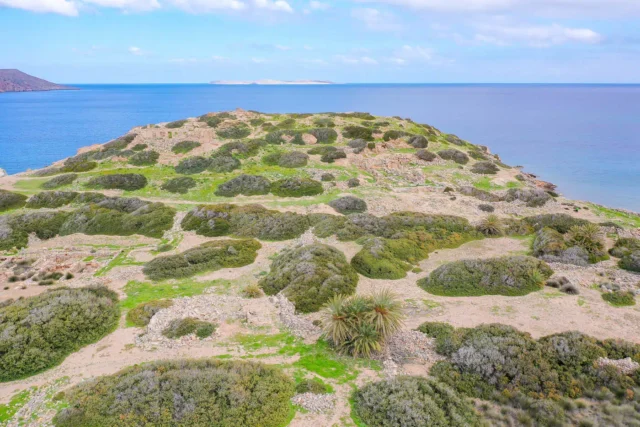
Ancient Itanos
Ancient Itanos, a prominent harbor city on Crete's northeastern coast, thrived on trade and cultural exchange. Its strategic location in the eastern Mediterranean facilitated its growth and influence over eastern Crete. The city, built across two adjacent hills, likely housed important sanctuaries. The city center, located between these acropoleis, contains partially excavated building remains. Two additional hills mark the northern and southern boundaries of the city, with the northern hill housing the necropolis and the southern hill featuring defensive walls and towers.
Itanos held a unique position among Cretan cities due to its outward-looking nature and focus on trade. The city prospered well into the Roman period, even minting its own coins. The Northern Necropolis served as the main burial ground, with excavations revealing its use from the late Geometric to the late Hellenistic period. Notable artifacts recovered from Itanos include a marble funerary stele depicting a warrior, now housed in the Agios Nikolaos Museum, and an Ionic capital made of ironstone, suggesting the presence of monumental structures.

Chamezi archaeological site
The Chamezi archaeological site, near the village of Chamezi in eastern Crete, offers a glimpse into Minoan life during the Middle Minoan IA period (c. 2000-1900 BC). The site's most notable feature is an elliptical house, a unique architectural form within the Minoan world. Discovered in 1903, the elliptical house's unusual shape and function initially puzzled archaeologists, with early interpretations suggesting it might have been a peak sanctuary due to the discovery of figurines and other ritual objects. However, subsequent research revealed the structure was likely a domestic dwelling. The house features two entrances, one on the southeast side and another on the northwest, leading to an upper floor via a staircase. The central area is believed to have been an open courtyard with a well or cistern on the eastern side. One of the largest rooms, located on the northeast side, may have served as a domestic shrine due to the number of figurines found there. Beyond the elliptical house, the Chamezi site also includes the remains of earlier structures dating to the Early Minoan period (c. 2800-2300 BC). These structures are thought to have been rural farmhouses. Excavations have yielded numerous bronze artifacts, further enriching our understanding of daily life in Minoan Crete. The Chamezi archaeological site provides valuable insights into Minoan domestic architecture, rural settlement patterns, and daily life. The elliptical house, with its unique shape and layout, challenges conventional notions of Minoan architectural design. The presence of both domestic and ritual objects suggests a blending of secular and sacred spaces within the Minoan home. The site's location, overlooking the sea and the surrounding countryside, also highlights the importance of agriculture and maritime activities in Minoan society.

Chandras, Siteia
Chandras, a village in the Siteia municipality of Lasithi, Crete, sits at 580 meters above sea level on the Armenohandrades plateau. Likely founded during Arab rule, its name may derive from the Arabic word for "green". The village was recorded in a 1577 census as Ghandra and in a 1583 census as Candra with 403 inhabitants.
The old village center, "Mesochoria", houses the churches of Agios Dimitrios and the Assumption of the Virgin Mary. Remnants of an Ottoman hammam can be found there, along with a Renaissance fountain and Venetian-influenced buildings. A folklore museum is also present in the village. The church of Agios Haralambos, with its neoclassical bell tower, stands in the northern part of the settlement. Nearby, the abandoned medieval village of Voila preserves monuments from the Venetian and Ottoman periods.

Etia, Sitia
Etia, located in the Armeni municipality in eastern Crete, is an uninhabited village with a rich history dating back to the Byzantine era. Known for its well-preserved Venetian mansion, the De Mezzo, Etia was once a major settlement. The village also features the churches of Agia Aikaterini and Agios Ioannis, both bearing traces of Byzantine wall paintings. The De Mezzo mansion, a significant example of Venetian architecture, has undergone extensive restoration. Etia, though deserted, remains a protected traditional settlement and a testament to Crete's diverse heritage.
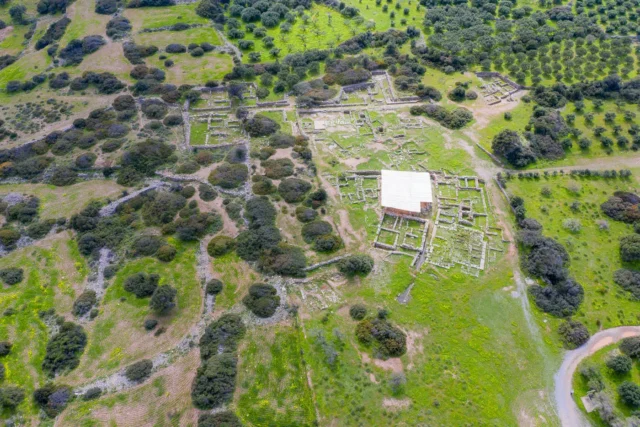
Palaikastro Minoan Settlement (Roussolakkos)
The Minoan settlement of Palaikastro, located near the modern village of Palaikastro on Crete's eastern coast, thrived during the Bronze Age. Occupied from the Early Minoan II to the Late Minoan IIIB periods (c. 2600-1200 BC), the settlement spanned over 50,000 square meters. Palaikastro's strategic location with a sheltered harbor facilitated trade and agriculture. Excavations have revealed a well-planned town with houses, workshops, and evidence of a vibrant social and economic life. The town's layout suggests central planning, with grid-like streets and organized blocks of houses, possibly indicating a clan-based social structure. Palaikastro's economy was based on agriculture, trade, and crafts like weaving, metalworking, and pottery production. Religious practices are evident through artifacts like figurines and incense burners. Ongoing archaeological investigations continue to enrich our understanding of this important Minoan center.

Siteia, Siteia
Siteia, a coastal town in eastern Crete, boasts a rich history dating back to ancient Greece. Possibly the birthplace of Myson, one of the Seven Sages of Greece, Siteia's historical significance is evident in its landmarks like the Kazarma fortress, a Venetian-era structure, and remnants of an Early Christian church and Roman fish tanks. The Archaeological Museum houses artifacts spanning millennia, including a collection of vessels and Linear A tablets. Today, Siteia is a vibrant town with a mixed economy of agriculture, handicrafts, and tourism. Visitors can enjoy various beaches, including Siteia Beach and Vai Beach, and explore the local culture at the Folklore Museum and the Museum - Exhibition of local products. The town is easily accessible by road, air, and sea, with Siteia Airport offering connections to various destinations.
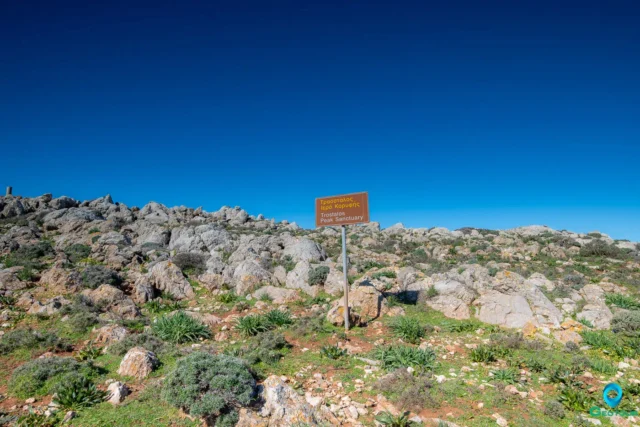
Traostalos Peak Sanctuary
The Traostalos Peak Sanctuary, located 3.2 km from the palace of Zakros in Crete, dates back to the Final Neolithic period (1700-1450 BCE). The site, partially excavated, features votive offerings, terracotta figurines, animal replicas, a clay model of a ship, bronze needles, gold ribbons, various vessels, and Linear A inscriptions. The sanctuary's decline in LM IB coincides with the rise of the Zakros palace and other peak sanctuaries' abandonment, possibly due to ideological shifts, earthquakes, or the Thera eruption. The site's lack of monumental dedications or evidence of large-scale animal consumption suggests less political influence compared to other peak sanctuaries. The construction of the Zakros palace marked a shift towards a more hierarchical social and political organization, contrasting with the public ceremonies at Traostalos. The sanctuary's abandonment after the wider area's unification under the palace indicates its connection to the early stages of state formation in Minoan Crete.
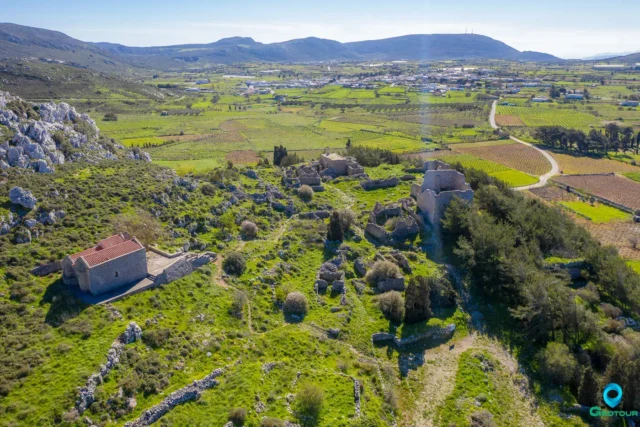
Voila abandoned village
Voila, an abandoned village near Chandras in Sitia, Crete, offers a glimpse into Crete's Venetian and Ottoman past. The village, deserted since the 19th century, likely owes its name to a Byzantine surname, a term for boyars, or a place for oxen. Voila was once a sizeable village, documented in Venetian censuses of the 16th century with over 300 inhabitants. A prominent landmark is the Venetian tower, featuring a 1742 Turkish inscription and carvings of axes, cypresses, and pentagrams. Local tradition links the tower to a Janissary named Tsin-Alis. The village also houses the ruins of the 15th-century church of Agios Georgios and Panagia, likely built by the Salamon family, potential ancestors of the poet Dionysios Solomos. Two fountains with Turkish inscriptions and remnants of a Venetian castle further illustrate Voila's rich history.

Zakros, Siteia
Zakros, a village on Crete's east coast, was once an important Minoan settlement. The ruins of the Minoan palace are a popular tourist destination and an important archaeological site. The village is also known for the Gorge of the Dead, named for the numerous Minoan Age tombs found in the caves along its sides. The Water Museum houses artifacts and tools related to the history of water use in the area, and the Folklore Museum displays exhibits on the traditional way of life in the region. Kato Zakros has a beautiful beach, and the nearby beach of Xerokambos is also worth visiting. The area around Zakros offers opportunities for hiking and exploring the natural beauty of the region.

Ziros, Siteia
Ziros is a village in eastern Crete, built at 590 meters on the southern foothills of Mount “Engremnos”. The area is characterized by limestone rocks with karst formations such as sinkholes and caves.
The area of Ziros is rich in archaeological remains. Near the village of Chamaitoulo, at the site of Vrysi, a large Minoan settlement with cyclopean walls has been found.
The earliest written mention of the settlement is made by Francesco Barozzi in 1577, who refers to it as Siro. In the Venetian census of 1583 it is referred to as Ziro with 448 inhabitants.
In the village are the churches of Agios Nikolaos, Agios Georgios, and Agia Paraskevi. The church of Agia Paraskevi has frescoes dating back to 1523.









